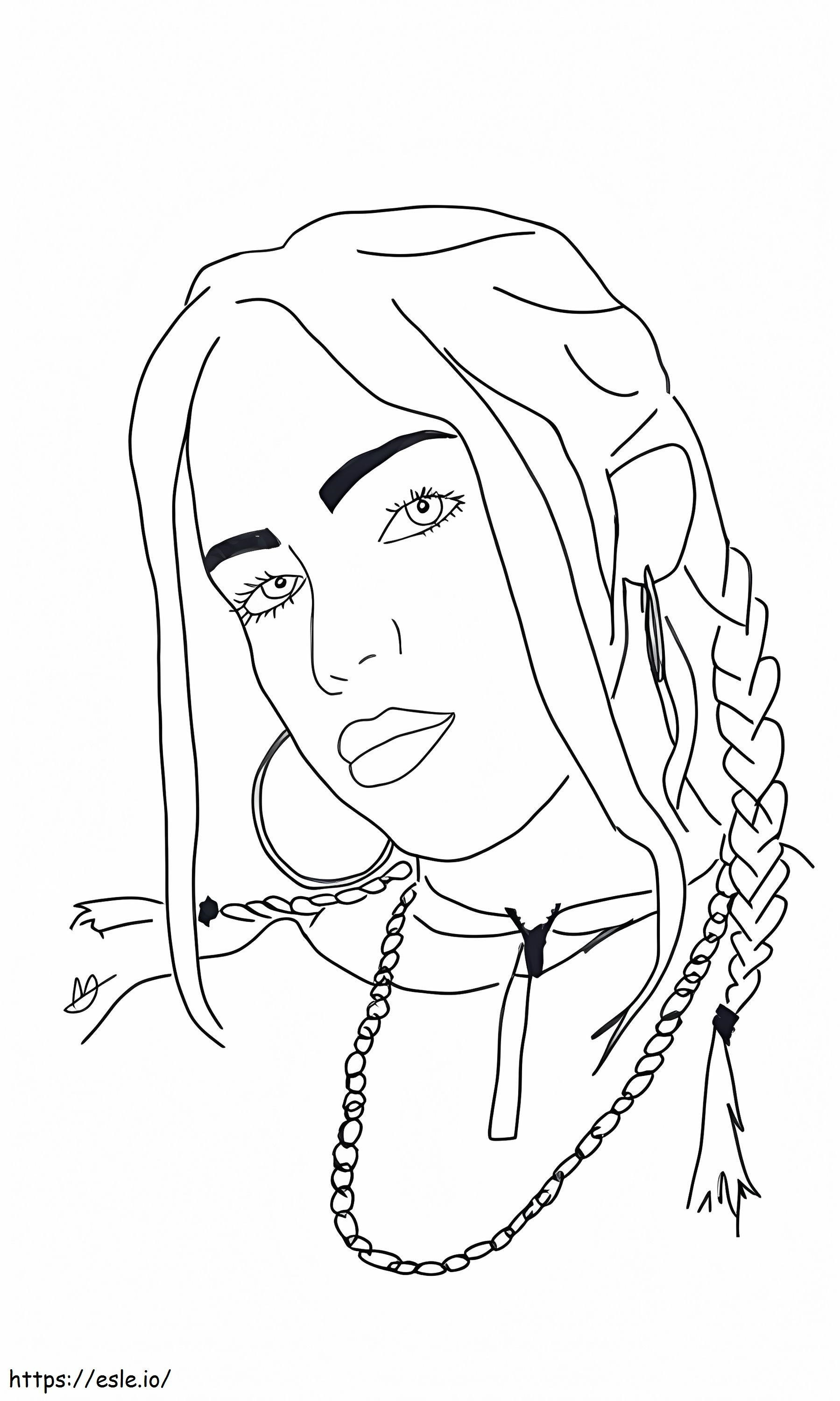Table of Contents
Introduction
Billie Eilish deepfakes have become a growing concern in today's digital age. With the rapid advancement of artificial intelligence (AI) and machine learning technologies, the creation and dissemination of deepfakes have become easier than ever. Billie Eilish, a globally recognized pop sensation, has not been spared from this troubling trend. As her influence and fanbase continue to grow, so does the misuse of her likeness in manipulated media.
Deepfakes are synthetic media where a person's likeness is digitally altered to create hyper-realistic but fake content. These manipulated images and videos can range from harmless parodies to malicious content designed to damage reputations or spread misinformation. For a public figure like Billie Eilish, deepfakes pose significant risks to her personal brand, privacy, and mental well-being.
Understanding the phenomenon of deepfakes is crucial for both fans and the general public. It not only helps in identifying fake content but also raises awareness about the ethical and legal implications of such technologies. This article delves into the world of Billie Eilish deepfakes, exploring their creation, impact, and potential solutions to mitigate their harmful effects.
Read also:Barbara Havelone A Comprehensive Guide To Her Life Career And Achievements
What Are Deepfakes?
Deepfakes are a form of synthetic media created using artificial intelligence (AI) and machine learning algorithms. The term "deepfake" is derived from "deep learning" and "fake," highlighting the role of AI in generating these manipulated images or videos. Deepfake technology uses neural networks to analyze and replicate facial expressions, voices, and movements, allowing creators to superimpose one person's likeness onto another's body or voice.
Here are some key characteristics of deepfakes:
- They are highly realistic and often indistinguishable from authentic content.
- They can be created using publicly available software and tools.
- They are often used for entertainment, satire, or malicious purposes.
While deepfakes have gained popularity in recent years, their origins can be traced back to early experiments in computer graphics and AI. Today, the technology has evolved to a point where even individuals with limited technical expertise can create convincing deepfakes using free or low-cost tools.
Billie Eilish and Deepfakes
Billie Eilish, a Grammy-winning artist known for her unique style and hauntingly beautiful music, has become a target for deepfake creators. Her global fame and distinctive appearance make her an ideal subject for manipulation. Deepfakes featuring Billie Eilish have surfaced on various platforms, ranging from social media to dedicated deepfake websites.
Below is a table summarizing Billie Eilish's personal information and career highlights:
| Full Name | Date of Birth | Place of Birth | Occupation |
|---|---|---|---|
| Billie Eilish Pirate Baird O'Connell | December 18, 2001 | Los Angeles, California, USA | Singer, Songwriter, Actress |
| Notable Achievements | 7 Grammy Awards, 2 American Music Awards, 2 Guinness World Records | ||
Deepfakes involving Billie Eilish often exploit her image to create fake interviews, performances, or even inappropriate content. These manipulations can mislead fans and damage her reputation, making it essential to address the issue proactively.
Read also:Hallie Batchelder A Rising Star In The Entertainment Industry
The Rise of Deepfake Technology
The rise of deepfake technology has been fueled by advancements in AI, increased access to powerful computing resources, and the widespread availability of digital content. Platforms like YouTube, TikTok, and Reddit have become hotspots for sharing and distributing deepfakes, further amplifying their reach.
Here are some contributing factors to the rise of deepfakes:
- Improved AI Algorithms: Modern AI models are capable of generating high-quality deepfakes with minimal input.
- Accessible Tools: Open-source software like DeepFaceLab and FaceSwap has made it easier for anyone to create deepfakes.
- Social Media Influence: The viral nature of social media platforms accelerates the spread of deepfake content.
Impact on Society
Deepfakes have far-reaching implications beyond individual cases like Billie Eilish. They can be used to spread misinformation, manipulate public opinion, or even interfere in political processes. The technology's potential to blur the line between reality and fiction poses a significant challenge to trust and authenticity in the digital age.
How Deepfakes Are Created
Creating a deepfake involves a multi-step process that leverages AI and machine learning techniques. While the exact methods may vary depending on the tools used, the general workflow includes the following stages:
- Data Collection: Gathering a large dataset of images or videos of the target individual.
- Training the Model: Using AI algorithms to analyze and replicate the target's facial features, expressions, and voice.
- Rendering: Combining the replicated features with the desired background or context to create the final deepfake.
Tools and Software
Several tools are commonly used to create deepfakes, including:
- DeepFaceLab
- FaceSwap
- Reface
These tools are often free or inexpensive, making deepfake creation accessible to a wide audience. However, their misuse can lead to significant ethical and legal challenges.
Ethical Concerns Surrounding Deepfakes
Deepfakes raise numerous ethical concerns, particularly when they involve public figures like Billie Eilish. The unauthorized use of someone's likeness can infringe on their privacy and intellectual property rights. Additionally, deepfakes can be used to spread false information, damage reputations, or even incite violence.
Potential Misuses
Some of the most concerning misuses of deepfakes include:
- Creating fake celebrity endorsements
- Producing explicit or harmful content
- Spreading political misinformation
Addressing these ethical concerns requires a collaborative effort from governments, tech companies, and the public to establish clear guidelines and regulations for deepfake usage.
Legal Implications of Deepfakes
The legal landscape surrounding deepfakes is still evolving, with many jurisdictions struggling to keep pace with the rapid advancements in AI technology. However, several laws and regulations have been introduced to address the misuse of deepfakes:
- Intellectual Property Laws: Protect individuals' rights to their likeness and image.
- Defamation Laws: Address false statements or representations that harm a person's reputation.
- Privacy Laws: Safeguard individuals from unauthorized use of their personal data.
Challenges in Enforcement
Enforcing these laws can be challenging due to the global nature of the internet and the anonymity provided by online platforms. As a result, many victims of deepfake misuse, including celebrities like Billie Eilish, often struggle to hold perpetrators accountable.
Impact of Deepfakes on Celebrities
Celebrities are particularly vulnerable to the negative effects of deepfakes. Their public personas and widespread media presence make them easy targets for manipulation. For Billie Eilish, deepfakes can lead to:
- Damage to her personal and professional reputation
- Emotional distress and mental health challenges
- Loss of trust among fans and collaborators
Case Studies
Several high-profile cases involving celebrities and deepfakes highlight the severity of the issue. For example, actors and musicians have reported instances of their likenesses being used in explicit content without their consent. These incidents underscore the urgent need for better protection mechanisms.
Protecting Against Deepfakes
While completely eliminating deepfakes may be impossible, there are several steps individuals and organizations can take to protect against their harmful effects:
- Education and Awareness: Educating the public about deepfakes and how to identify them.
- Technological Solutions: Developing tools and algorithms to detect and flag deepfake content.
- Legal Action: Pursuing legal remedies against those who create or distribute malicious deepfakes.
Role of Tech Companies
Tech companies play a crucial role in combating deepfakes by implementing stricter content moderation policies and investing in detection technologies. Platforms like YouTube and Facebook have already taken steps to address the issue, but more work is needed to stay ahead of evolving threats.
The Future of Deepfake Technology
As deepfake technology continues to evolve, its potential applications are both promising and concerning. On the positive side, deepfakes can be used for creative purposes, such as in filmmaking, virtual reality, and entertainment. However, their misuse remains a significant challenge that must be addressed.
Potential Developments
Some potential developments in deepfake technology include:
- Improved detection tools to identify fake content
- Stricter regulations and enforcement mechanisms
- Increased public awareness and education
By staying informed and proactive, society can harness the benefits of deepfake technology while minimizing its risks.
Conclusion
Billie Eilish deepfakes highlight the growing challenges posed by synthetic media in the digital age. While the technology behind deepfakes offers exciting possibilities, its misuse can have severe consequences for individuals and society as a whole. By understanding the risks and taking steps to address them, we can protect public figures like Billie Eilish and ensure a safer online environment for everyone.
We encourage readers to stay informed about the latest developments in deepfake technology and share their thoughts in the comments below. If you found this article helpful, please consider sharing it with others or exploring more content on our website.

